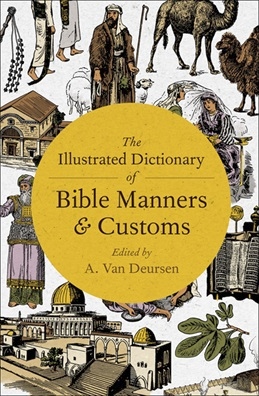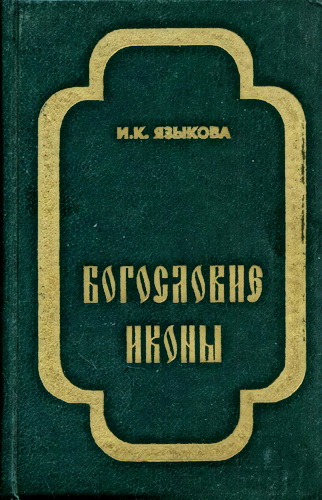
The Illustrated Dictionary of Bible Manners and Customs
The Illustrated Dictionary of Bible Manners and Customs
Edited by A. Van Deursen. – New York: Philosophical Library, 1982. – 126 p.
ISBN: 978-1-5040-6682-2
Wherever we turn in the Bible we shall almost certainly find references to objects familiar in the Middle East in ancient times. Towns have their walls and gates, agriculture has its threshing instruments and carts, large houses have their corner-stones and courtyards, the tabernacle has its altars and lavers of brass—and so forth. We often wonder how we are to picture these things. What did a barber’s razor look like? What are walls and bulwarks? What is the meaning of the word “pit” in the Authorised Version? A clearer picture of these everyday objects will help towards a better understanding of the Bible.
There are books and publications that could be consulted, but not everyone has the time or the opportunity to do so. Hence this volume, giving a classified collection of illustrations of various terms, objects, manners and customs in the Bible. As a rule the drawings are based on data provided by archaeological research, primarily by excavations; no attempt has been made to give any hypothetical reconstructions. The scope is thereby restricted to those subjects on which adequate information is available.
In order to give a more vivid sense of direct contact with the past frequent quotations are made from ancient sources. I have visited many of the sites mentioned and studied many of the objects in the museums of Cairo, Paris, Rome and Tel Aviv, being particularly indebted to the Library Ex Oriente Lux at Leiden and the Bibliotheca Rosenthalia at Amsterdam.
A number of additional terms, selected in consultation with Dr. H. Bergema, have been added to this edition.
* * *
Trees and Bushes (4)
1. St. John’s bread tree (so called because, it was thought, though with no certainty, that John the Baptist ate the fruit) is a tree not unlike an enlarged combination of two common shrubs, the acacia and the broom. It derives its Latin name, ceratonia , from the shape of the somewhat horny pods. The small beans in the black pods were at one time used as weights, called carats from the Greek word keration . Jewellers still use this word as a standard for gold and diamonds. Professor van Veldhuizen adds to his comments, from which the above notes on the bean are taken, this observation about the prodigal son: “according to St. Luke 15:16, ‘he would fain have filled his belly with the husks that the swine did eat, and no man gave unto him’. The question arises, why did he then not take some? To which the answer is that there was a famine in the land, and the swine had to find their own food while he tended them. In the evening they were given a feed, while he had to stand by looking on. It was more important to the owners that the swine should be well fed than that he was underfed. What was translated as husks were the keration , the fruit of the carob.”
2. Branches of the almond tree: fruit ( a ), blossom ( b ). The almond tree flowers very early in the year; the buds appear in January, and in February the blossom is out, a wonderful sight at a time when snow is still in the air. Jeremiah (1:11) once saw “a rod of an almond tree” ( maqqel saqed ), an almond branch, and he was to learn from this that God is wakeful over His word to carry it out (Jer. 11:12, Moffatt). Indeed, the almond tree never seems to be asleep (and Moffatt translates: “The shoot of a wake-tree”), and for that reason it is a fitting symbol in the vision. The fact that Aaron’s rod burst into flower during one night (Num. 17:8) has something to do with its being an almond branch. The flowers are first flushed with red, becoming entirely white, and are therefore a symbol of old age (Eccles. 12:5). The almond was considered one of the best fruits in the land (Gen. 43:11) and it served as a motif for decorating the golden candlestick (Exod. 25:33, 34; 37:19).
3. Myrrh . The resin of this plant was greatly valued. Myrrh was a component of the holy anointing oil (the purest myrrh, sweet cinnamon, calamus, cassia, olive oil, Exod. 30:23), because of its delicate scent (“my fingers dripped with sweet smelling myrrh”, Song of Sol. 5:5). It was used as a perfume for scenting clothes (Ps. 45:8 “all thy garments smell of myrrh, aloes and cassia”; cf. Song of Sol. 3:6) and for beds (Prov. 7:17). “Oil of myrrh” was a beauty preparation (Esther 2:12). It was often carried in chains or sweet balls (Isa. 3:19), or bundles of myrrh were worn on the breast (Song of Sol. 1:13). The gifts of the wise men from the east consisted of gold, frankincense and myrrh (Matt. 2:11); Nicodemus brought a mixture of myrrh and aloes for Jesus’ burial (John 19:39). Myrrh was also mixed with the wine at the Cross (Mark 15:23).
4. Nard . The root of this plant yields the spikenard preserved in alabaster boxes (Mark 14:3; John 12:3). In deducing from the Song of Solomon 1:12; 4:13, 14 that nard was grown in the gardens of Palestine, we ought rather to interpret this plant as a kind of valerian. It is however often difficult to be sure about the plants named in the Bible.
Plants
1. Myrtle . The myrtle has always been much sought after for its scent; the leaves and the berries were used in medicine since they contain an aromatic, volatile oil (which gives the leaves a mottled and transparent appearance).
In Israel myrtle branches were used at the Feast of Tabernacles. In the days of Nehemiah there was a wooded region west of Jerusalem (the name Kirjath-Jearim = town of woods, cf. Joshua 15:9), whence branches of myrtle were fetched to make booths (Neh. 8:16). The myrtle grows in valleys where the soil has plenty of moisture, so that a complete transformation of desert soil into a watery region is implied in Isaiah’s prophecy (41:19) “I shall plant a myrtle tree in the desert”. When those that are heavy of heart are invited to partake of Christ’s bountiful goodness, the complete change that will be brought about in the dark world by His reign of peace is summed up in the prediction “instead of the briar shall come up the myrtle tree” (Isa. 55:13). Zechariah’s first vision at night time also points to the fact that the myrtle grows in the valleys: “The angel of the Lord is among the myrtles, which were in the bottom” (Zech. 1:8–11).
2. Lentil . The common lentil, an annual, is grown for its nourishing, tasty seeds. In Palestine the lentil is sown in December, and cooked lentils, are very popular as a hot winter dish. In ancient Israel, too, the lentil was well known (Gen. 25:34; 2 Sam. 17:28; 23:11; Ezek. 4:9).
3. Hyssop . The plant shown in the plate is hyssopus officinalis , a shrub with a profusion of stems, and flowers with pentapetalous, bilabiate calyx (a) usually surrounding a blue and sometimes a pink or white crown. The use of hyssop in holy scripture is first mentioned in Exodus 12:22, “And ye shall take a bunch of hyssop and dip it in the blood that is in the basin and strike the lintel and the two side posts”.
Hyssop was also used for water of separation (purification) (cf. Num. 19:6) while a combination of cedar wood, scarlet and hyssop was used for the cleansing of lepers (Lev. 14:4, 6, 49, 51, 52). In the Epistle to the Hebrews 9:19:“he took the blood of calves and of goats with water and scarlet wool and hyssop” and for the same reason David cried “purge me with hyssop, and I shall be clean” (Ps. 51:7). It is said of Solomon: “He also spake of the trees, from the cedar, that is in the Lebanon, even unto the hyssop, that springeth out of the wall” (1 Kings 4:33), and so the hyssop, one of the smallest plants, is here contrasted with the mighty cedar. And lastly in St. John 19:29, “They filled a sponge with vinegar and put it upon hyssop”. Which variety of hyssop is alluded to here is open to some doubt; Linneus assumed that it was the hyssopus officinalis .
4. Shalots . The shalot derives its name from the city of Ascalon (of which it is the onion— allium ascalonicum ). It is still a popular favourite in Palestine, even as it was in early times when the Jews in the desert remembered with sadness the leeks and the onions and the garlic (Num. 11:5).
Animals
1. Dromedary. 2. Camel . In Hebrew there is no distinction between camel and dromedary. Even in later times, when mention is made in prophecies of camels in Babel (Isa. 21:7), in the south country (Isa. 30:6), and with the Arabs (Jer. 49:29, 32), the one word gāmāl is always used. So there was apparently no characteristic difference in the eyes of the Israelites between camels with one or two humps, yet there is evidence that they were not unobservant about camels in the separate words they used for the male and the female foals. Hence the A.V. translation of Isaiah 60:6 “the multitude of camels shall cover thee” refers to the Hebrew bëkher , meaning young male camels, while in Jeremiah 2:23 “thou art a swift dromedary traversing her ways” the original has the word bikhră for a female foal (F. J. Bruijel).
3. The gazelle is still extant in Palestine. The animal is admired for its speed, cf. 2 Samuel 2:18, where Asahel is described as “light of foot as a wild roe” (See also 1 Chron. 12:8; Song of Sol. 2:17 and Isa. 13:14). “Then, like hunted gazelles, like sheep unshepherded, shall men be hurrying home, each off to his own land” (Moffatt). In Song of Solomon (2:7; 4:5) the gazelle typifies gracefulness. The name Zibiah (for a man, 1 Chron. 8:9 and for a woman, 2 Kings 12:1) and Dorcas (Acts 9:36) indicate that the name “gazelle” was given to humans. The law allowed its meat to be eaten (Deut. 14:5) and so it was hunted (1 Kings 4:23). But it was not used for sacrifices (Deut. 12:5).
4. The ibex with its powerful horns used to be common in the mountainous regions of Palestine (cf. 1 Sam. 24:2, “the rocks of the wild goats” near Engedi; and in Ps. 104:18, “the high hills are a refuge for the wild goats”). They are still to be found among the rocks round the Dead Sea, also mentioned by Job (Job 39:1, “the wild goats of the rock”). The female of the ibex was admired by the Arabs for its speed and gracefulness, while in Proverbs the wife of youth is called “a pleasant roe” (Prov. 5:19).
5. The onager is called a wild ass in the Authorized Version. “It is of the same size as the tame donkey, but its legs are more delicate. It has a slender neck, slightly curved, and long, upright ears. The mane is dark, whereas the body is of a light colour. A brown, bristly ridge runs from the mane to the tail” (F. J. Bruijel). They live wild in the plains (cf. Job 39:5–9); the freedom-loving peoples of Ishmael’s offspring are compared to them (Gen. 16:12). They live in the wilderness and eat grass (Job 6:5), the open country is their home (Job 39:5, 6). So the judgement of destruction is exactly as Isaiah prophesied, “the forts and towers shall be for dens for ever, a joy of wild asses, a pasture of flocks” (Isa. 32:14). The wild asses, accustomed to the wilderness (Jer. 2:24; Job 24:5) also move to the bare mountains, where they drink water from the springs in the valleys (Ps. 104:11).
Animals (2)
1. The mule is a cross between a he-ass and a mare (Esther 8:10). It is strong and brave like a horse, with the cautious tread of a donkey (Esther 8:14). During the time of David, the mule was ridden by princes (2 Sam. 13:29; 2 Sam. 18:9). It makes an excellent pack animal (1 Chron. 12:40); Naaman, for example, wanted to take earth from Israel, “two mules’ burden of earth” (2 Kings 5:17), and it was also used in the army (Zech. 14:15). Crossbreeding was prohibited by law (Lev. 19:19) so these animals were probably purchased elsewhere; the people of Togarmah possessed mule studs, as we learn from Ezekiel 27:14:“they of the House of Togarmah traded in thy fairs with horses and horsemen and mules”.
2. The goat . Its ears were long and floppy. A shepherd when wrestling with a lion might perhaps be able to rescue a piece of his goat’s ear (Amos 3:12). The goats had long, black hair (Song of Sol. 4:1; 6:5), hence the black tents made of goat’s hair (Song of Sol. 1:5), and the resemblance of a goatskin to David’s hair (1 Sam. 19:13). The meat provided a favourite savoury dish (Gen. 27:9; Luke 15:29; Judges 6:19; 13:15; 15:1; 1 Sam. 16:20). To have sufficient goat’s milk was regarded as a blessing (Prov. 27:27). The goatskin was used for water bottles, sometimes even as a poor man’s raiment (Heb. 11:37). The goat’s hair was spun by women into cloth (Exod. 35:26) for tent coverings (Exod 26:7). The flocks of goats generally grazed on mountains or hills, hence the description in 1 Kings 20:27 of the Israelite army “like two little flocks of kids”.
3. The fat-tailed sheep is to be recognized by its fat, fleshy tail. It was stipulated that in making an offering, the sacrificer should “take the whole rump, it shall be taken off hard by the back bone” (Lev. 3:9). The colour of the wool is normally white (Ps. 147:16; Isa. 1:18; Dan. 7:9; Rev. 1:14; Song of Sol. 6:6), with brown, sometimes black, legs and head; this explains the compact between Jacob and Laban (Gen. 30:32). The sheep were described as by nature kind-hearted, not wilful, fearful, defenceless, patient in suffering (Isa. 53:6, 7; Jer. 11:19; Ps. 119:176). The sheep was useful in Israel because of its milk (Deut. 32:14; Isa. 7:21, 22), the meat (1 Sam. 25:18; 2 Sam. 12:4; 1 Kings 4:23) and the wool, which was woven into cloth (Job 31:19, 20).
4. The hyrax , a small animal, lives in large companies in rocky areas (“the rocks are a refuge for the conies” Ps. 104:18). In the Authorized Version the Hebrew word is translated by coney (Prov. 30:26; Lev. 11:35; Deut. 40:7). If now the biblical coney is replaced by the hyrax, we find that the writer is not far wrong in saying that this animal “cheweth the cud, but divideth not the hoof” (Lev. 11:5).
5. Quail . Every year the quails migrate in huge flocks; when they are exhausted they fall to the earth and are often picked up by the Arabs to be eaten as a delicacy, just as they were for the ancient Israelites on their journey through the wilderness (Exod. 16:13; Num. 11:31; Ps. 105:40).




Комментарии
Пока нет комментариев. Будьте первым!